reviewed by Christina Lopez
Glance backward at the historical production of “medicine.” Herbalists have long been using herbs to make herbal extracts and tinctures for natural remedies. These concentrated forms of herbs preserve longer and offer controllable dosage.
A few drops of a tincture or extract can equate to the dosage of commonly administered prescription medications.
Although these methods have historical heritage, they still have practical modern applications. Extracts and tincture drops can be taken orally, in tea, or in food preparation. They give you a valuable way to preserve your herbs or to prepare bulk dried herbs.
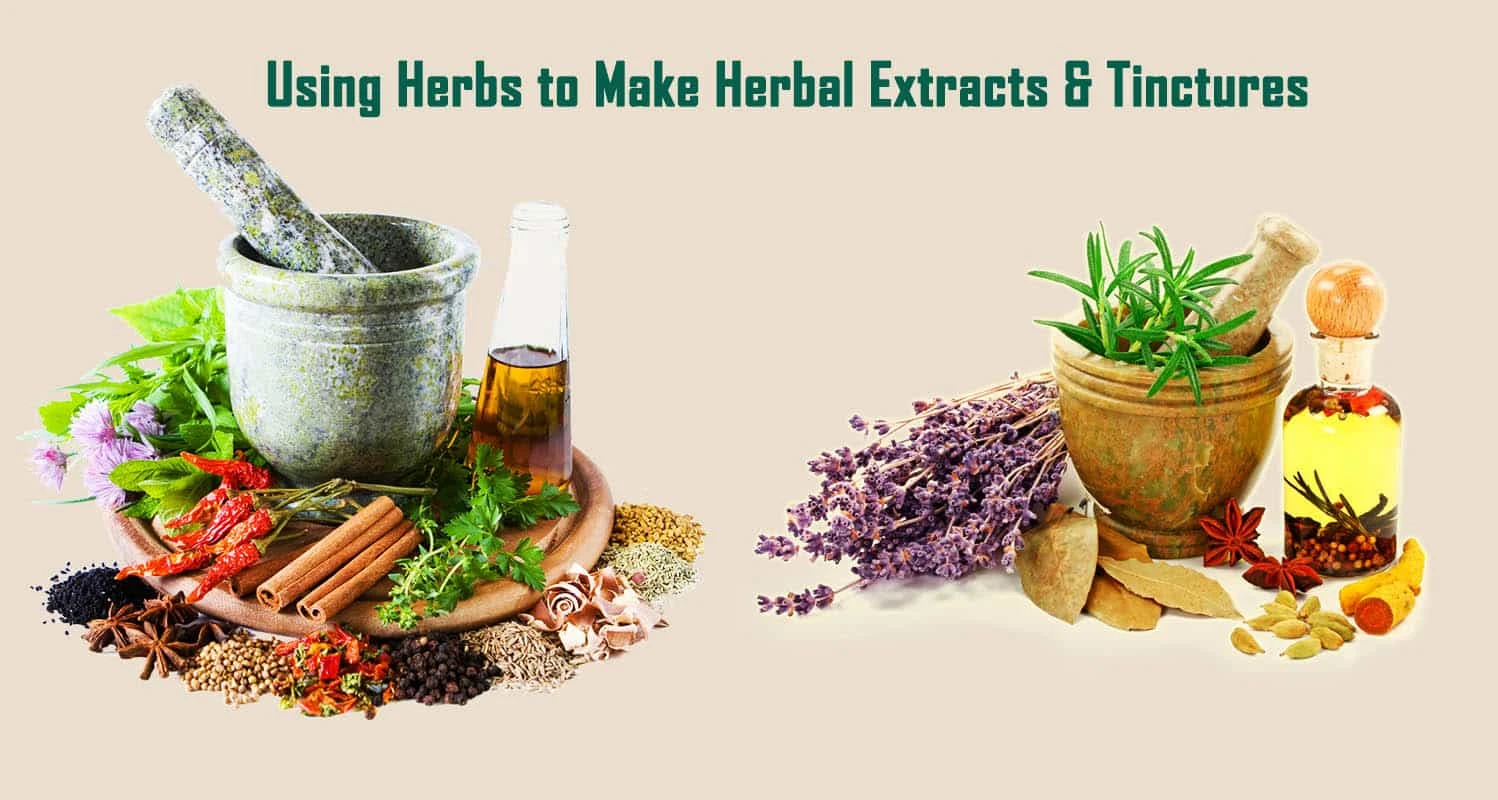
Contents
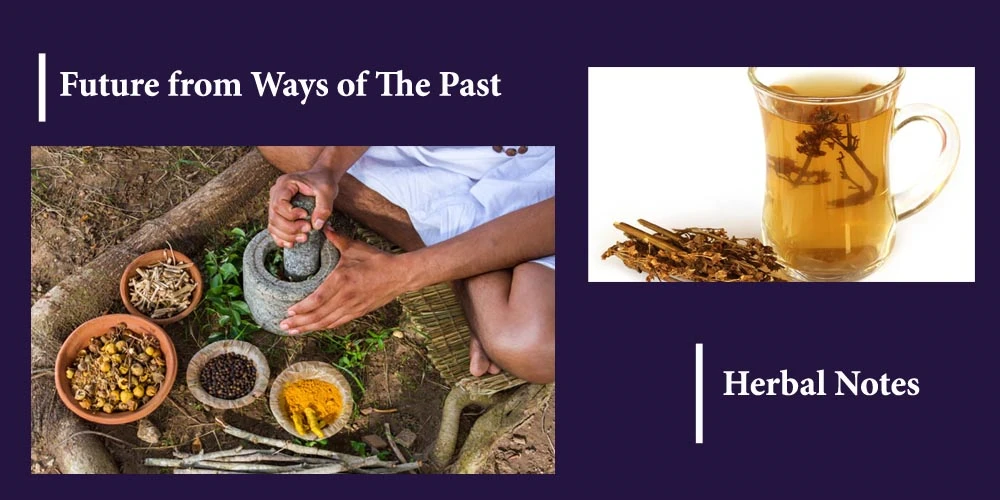
I wanted to help revive something that I am very passionate about it. Just not the love of herbs but the use of herbs. One of the beautiful ways to use your herbs is looking back at “folk medicine.” Although folk medicine is not recognized in today’s medical community, it still serves a great benefit. For those seeking an alternative remedy to common ailments, herbs are nature’s resource.
I was fortunate enough to grow up with a lot of influence that included the use of what nature provided. Wise women, men, and mentors that knew character long had a plan before science and pharmacy intervened.
Modern medicine is not without merits, and there are many solutions available. Life-saving treatment and technology exist through modern medicine as well. As always, consult physicians and seek proper guidance when looking to cure real serious illness. The information here is an alternative resource and educational material that you can explore.
Also, as with any medications, herbals can have side effects. Do your due diligence with research and understand what you put in your body!
These are the natural chemicals inside a plant. Examples are alkaloids, coumarins, flavonoids, minerals, volatile oils, and more. The contents of each herb or plant are type-specific.
This is a substance, in the case of extracts and tincture, a liquid, that dissolves solids. The solvent in extracts is used as a base to draw out the constituents of the herbs and their parts.
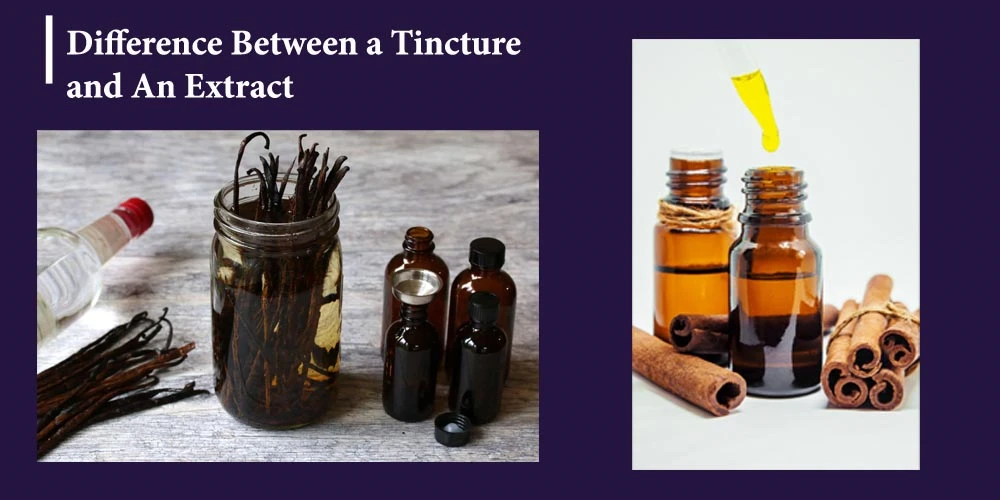
Extraction is the action required to produce both a tincture and an Extract. This can make them appear on the surface the same. Although the process to create is similar, they are unique herbal creations.
This can also be debated even in the herbal community on a clear line of definition. This is the way I like to view it and makes it very simple to sort.
They are extracted herbal concentrates with the use of alcohol as the solvent. This allows for greater use of multiple parts of the herb and the plant as a whole.
Tinctures offer longer storage life and more of the medicinal components of an herb. This is due to the rich alcohol content that extracts more constituents of the herb. Furthermore, it can be the only option for extraction when working with whole plants, some barks, and more complicated root bases.
Solvents other than alcohol used for herbal extraction create an Extract. For example, water, glycerin, oils, or vinegar as solvents begin extracts. A familiar example is a commonly used cooking aid in vanilla extract.
Extracts still infuse the medicinal properties of the herbs but lower strength. The constituents of herbs are better extracted through alcohol than other mediums.
There can always be an exception; some vinegar extractions can be referred to as tinctures depending on the herb type and method. By dictionary definition, however, a tincture is defined clearly “as a medicinal extract in a solution of alcohol”.
This is quite an easy process to do. Patience I found to be the most difficult struggle for me because you will have some time to wait. Extraction is done by soaking your herb (plant matter) in a solvent (like alcohol, glycerin, vinegar, etc.). A brewing or aging process of several weeks is needed to draw out the constituents (the good stuff).
Two methods to Make Herbal Extracts That I use:
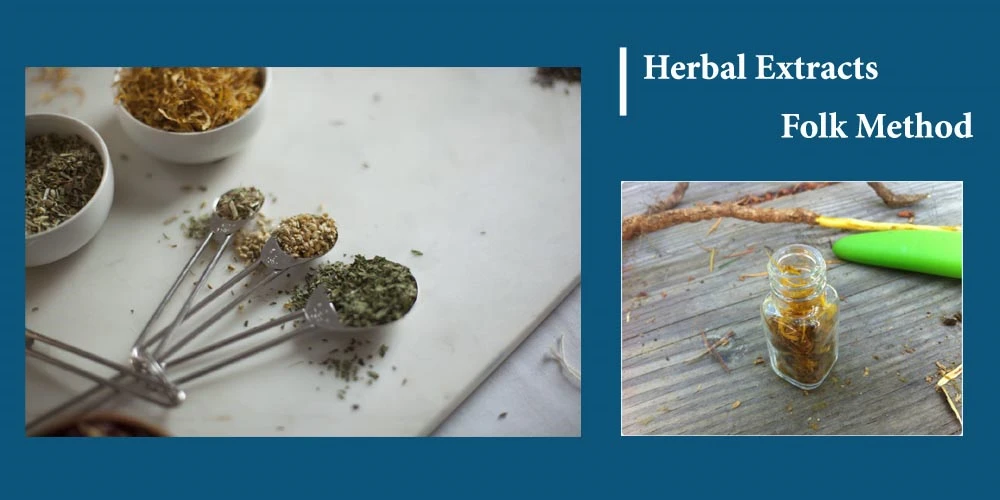
This is a simple method of extraction. For many herbs and applications, this can be very useful. However, the folk method uses no exact measurements. This can produce inconsistency in results. It is making a weak extract or tincture or an overly strong mixture.
This method is suitable for herbs that are consistent in size, texture, and weight—recommended for topical applications, cleaning solutions, or other non-consumable extracts. For medicinal purposes, the constant of the ratio method below is preferred.
An Excellent Video Demonstration of the Folk Method
→You Will Need
→Basics of the Folk Method
I am using a glass jar like a mason jar. Fill it ¼ to ½ complete with dried herbs or almost full of fresh herbs. Fill the rest of the space in the pot with your menstruum (alcohol, glycerin, oil, or vinegar). Shake daily and allow it to sit for 4 to 6 weeks. (exact herb ratios, menstruum, and time determination is herb specific)
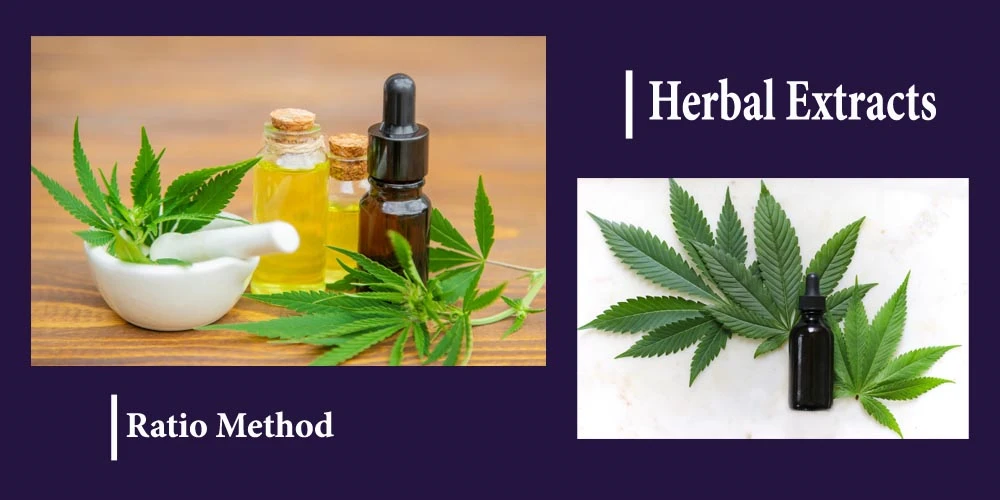
The Ratio method is much more precise and constant. Batch after batch is consistent. Dosage and strength can be regulated with each extraction made. Records are effortlessly kept and adjusted to suit needs and preferences better.
This method will help to ensure that herb dosage amounts are more accurate. Thereby making it a better way for medicinal usages and culinary extracts for flavors.
In the ratio method, there is a standard procedure, but it is best to keep records. A journal will help you see what you have done in the past to duplicate it exactly in the future.
→Like the Folk Method, the Ratio Method will Need
→Also
→Basics of Ratio Method
Dried herbs (depends on herb type) use a ratio of 1:4 or 1:5. 1 being the amount of herbs 4 being the amount of liquid—for example, 1 ounce of herbs to 4 ounces of juice.
Fresh herbs use a different ratio, 1:2—for example, 3 ounces of fresh herbs to 6 ounces of liquid.
The precise measurements are placed in the jars the same way as the folk method. Herb first, liquid second. Shaken daily and allowed to extract for 4 to 6 weeks.
After the sitting period of 4 to 6 weeks has passed, your extract or tincture is ready for straining.
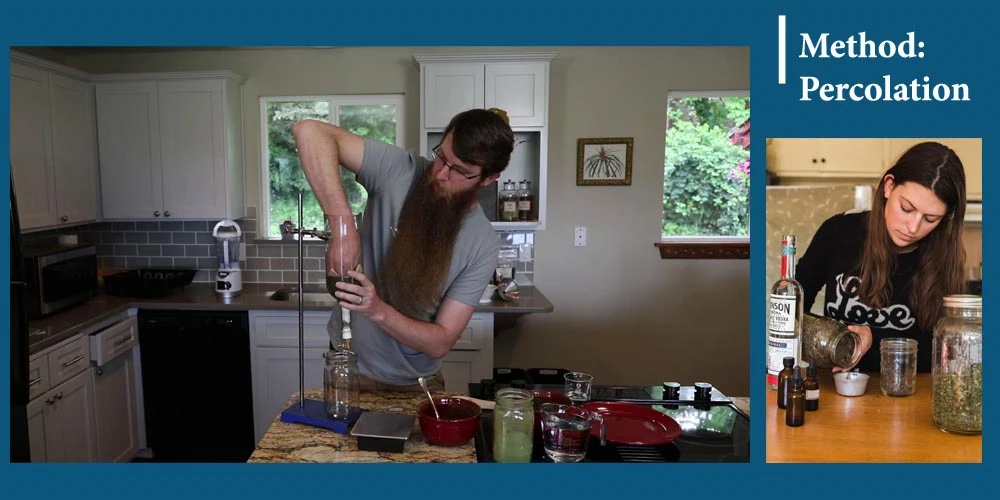
This method I do not do myself, so I am unfamiliar with the hands-on process. It requires special equipment to create the extract but cuts down the waiting time significantly. I wanted to share so you were aware of this as an option to make herbal extracts.
A Percolated extract or tincture can be ready in days instead of weeks. The strength of the constitution can be significantly increased by this method and require even less use of the mixture as a dosage.
This method only uses dried herbs; fresh herbs are not part of the percolation method. Glycerin cannot be used as a menstruum as it too thick to allow percolation.
In this method, dried measured herbs are ground into an excellent powder. This powder is placed into a percolator. The menstruum liquid is poured slowly over the powder. The process takes about 24 hours. The liquid that strains through should be a potent tincture.
If percolation fails for any reason, it can be converted into a standard folk method tincture or extract by jarring and sitting.
To learn more about the percolation method, Refer to the Madison Herbal Institute here.
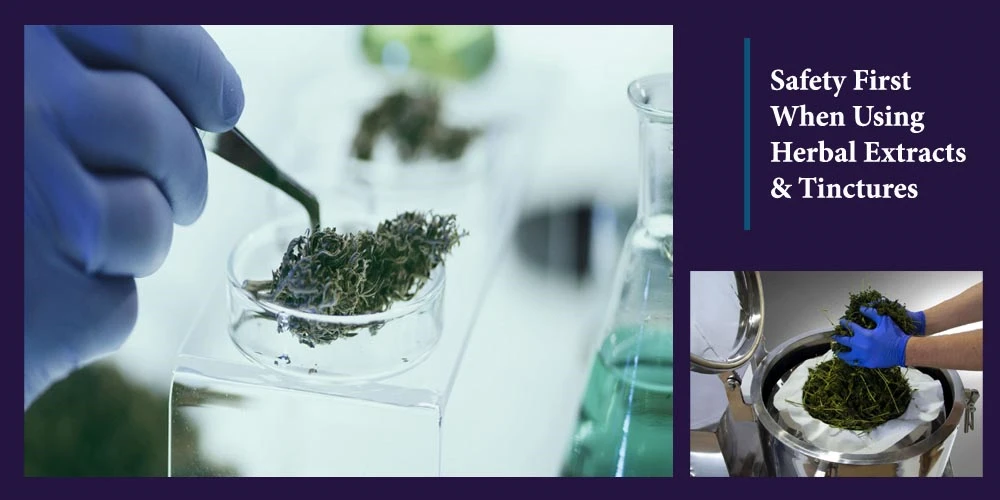
√ Each herb extraction and tincture will be unique. Exact dosages and measurements for use will vary depending on the specific herb used. These concentrated extractions are very strong!
√ Tinctures contain alcohol in most cases. Warnings when used with children, pregnant women, or others who may be sensitive.
√ Herbs have side effects, just like medicines. Research the herb and know the potential side effects of using it.
√ Consult a physician or medical professional. No herb, supplement, exercise, or diet should be started without understanding if it is ideal for you physically.
√ Do not collect herbs in the wild without being able to identify them positively! Many have similar looks.
√ Herb collection should not be done in unfamiliar areas or by the sides of roads. Sites could be treated with pesticides or other chemicals. Whenever possible, grow your own or purchase from a reputable dealer.
√ Do not use pesticides or chemicals on herbs you plan on turning into tinctures or extracts. These chemicals can produce toxins!
√ Store tinctures and extracts in darker bottles or darker areas. Be sure they are dated. Remedies are suitable for a year or more. Extracts a year or less depending on the method. Do not use beyond recommended dates.
This article is the first in a series I will post over the next few days and weeks. Reviving how to make herbal extracts and tinctures have been a passion of mine. They have had a place in my herbal medicine cabinet for a great many years, as well as my kitchen.
They are a great way to use your ample herb harvest as well. Tinctures and extracts are easy to make and use. Made and utilized correctly, you can enjoy a new way of using a heritage herbal method.
Perhaps you are already using herbal extracts and tinctures. If so, I would love to hear about it. Let me and the other readers know about your experiences below.
If this is new to you, I would also love your thoughts. As I begin this series into tinctures and extracts, I can be guided by what you would like to learn more about.
 |
 |
 |
 |

About Christina Lopez
Christina Lopez grew up in the scenic city of Mountain View, California. For eighteen ascetic years, she refrained from eating meat until she discovered the exquisite delicacy of chicken thighs. Christina is a city finalist competitive pingpong player, an ocean diver, and an ex-pat in England and Japan. Currently, she is a computer science doctoral student. Christina writes late at night; most of her daytime is spent enchanting her magical herb garden.
 |
 |
 |
 |
Get new FREE Gifts. Or latest free growing e-books from our latest works.
Disable Ad block to reveal all the links. Once done, hit a button below
 |
 |
 |
 |